- From holographic displays to self-driving cars, and brain-computer interfaces to genetic engineering, once-fictional technologies are poised to reshape our world in ways beyond imagination.
- Here are 26 items that have come true in sci-fi films, and seven new technologies that are still working their way to fruition.
In the realm of science fiction, filmmakers have long dazzled audiences with visions of futuristic technologies that once seemed confined to the realms of imagination.
From flying cars to artificial intelligence, these fantastical inventions have captured our collective imagination, inspiring wonder and curiosity about the possibilities that lie ahead.
However, what was once confined to the pages of novels and the screens of cinemas is steadily transcending into reality. In a remarkable convergence of fiction and innovation, a plethora of items once deemed purely fantastical are now being realised through cutting-edge technology.
Here, we embark on a journey through 25 such instances where sci-fi dreams have become real-world marvels.
1. Communicator devices

Movie: “Star Trek” (1966)
Remember Captain Kirk’s iconic handheld communicator? In “Star Trek,” the handheld communicator is an iconic device used by characters like Captain Kirk and Mr. Spock aboard starships like the USS Enterprise. The evolution from bulky walkie-talkies to sleek smartphones mirrors the progression of technology inspired by Star Trek’s iconic communicators.
Today, not only can we make calls from virtually anywhere, but smartphones also serve as our personal computers, cameras, and entertainment hubs.
2. Tablet computers

Movie: “2001: A Space Odyssey” (1968)
In “2001: A Space Odyssey,” when astronauts Dave Bowman and Frank Poole are depicted using what appear to be tablet-like devices called “newspads” while dining in the spacecraft’s mess hall.
These newspads resemble modern tablet computers, featuring a flat screen that displays text and images, as well as touch-sensitive controls for navigation.
Today, tablets have become indispensable tools for work, education, and entertainment, revolutionizing how we consume and interact with digital content.
3. Voice-controlled assistants
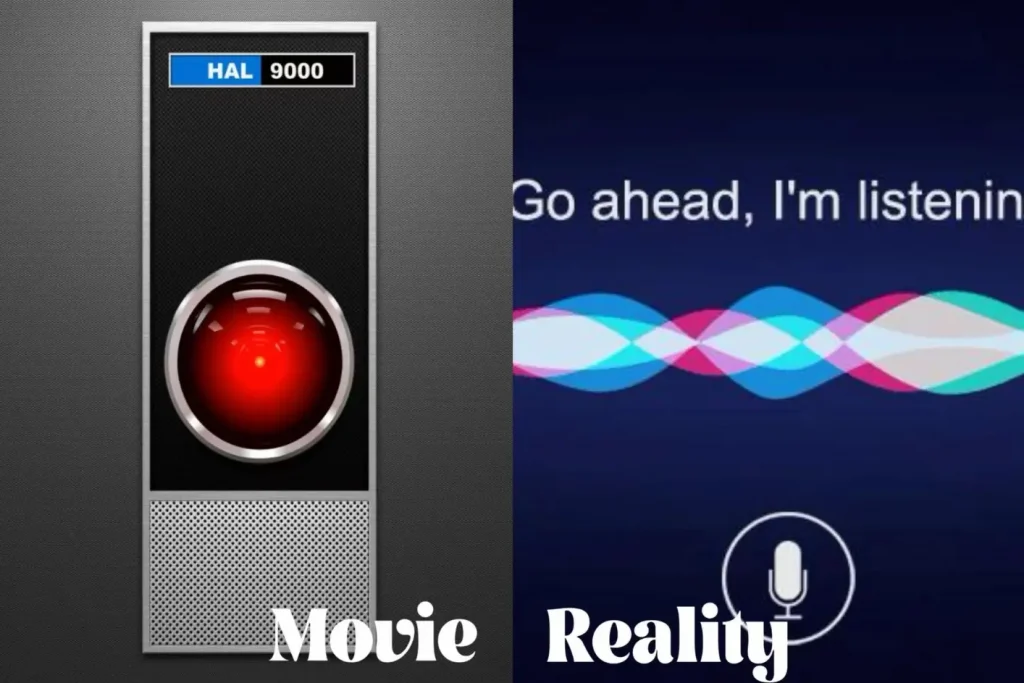
Movie: “2001: A Space Odyssey” (1968)
HAL is an artificial intelligence with advanced conversational abilities and functions as the onboard computer for the spacecraft Discovery One. HAL 9000 foreshadowed the rise of voice-activated assistants like Siri, Alexa, and Google Assistant.
Today, these AI-driven platforms not only respond to our commands but also anticipate our needs, manage our schedules, control smart home devices, and provide information at our fingertips.
4. 3D printing
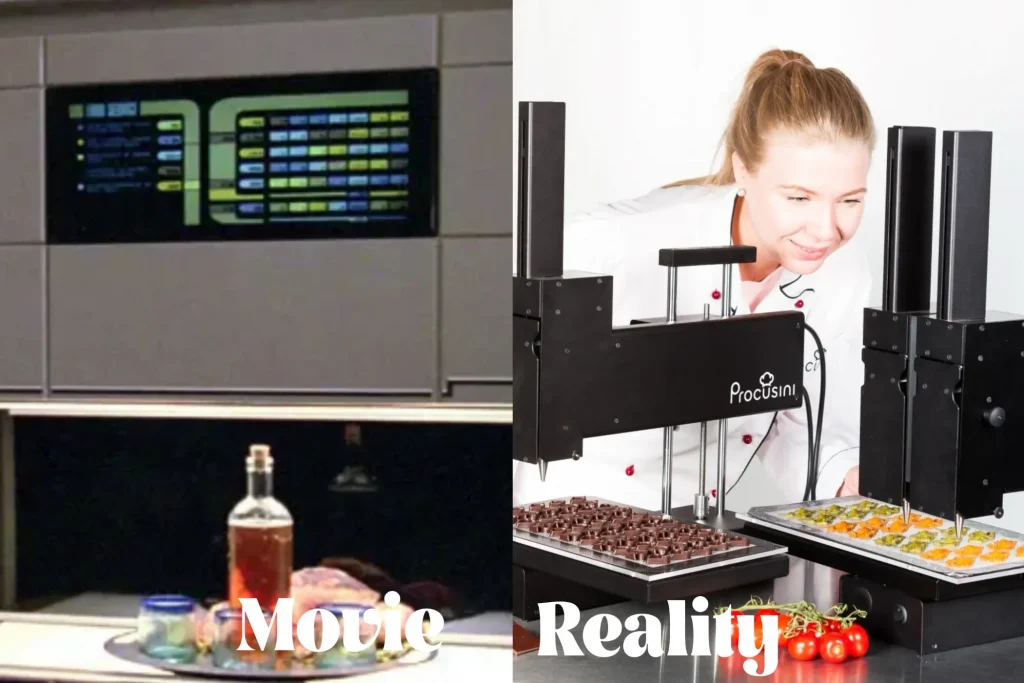
Movie: “Star Trek: The Next Generation” (1987)
The USS Enterprise-D, the main starship in the series, is equipped with food replicators capable of instantly synthesizing a wide variety of meals and beverages.
While we’re still a far cry from the replicators of Star Trek, 3D printing represents a significant step towards on-demand manufacturing.
From prototyping and aerospace components to personalised medical implants and even food, 3D printing is reshaping industries and democratizing production.
5. 3D holograms
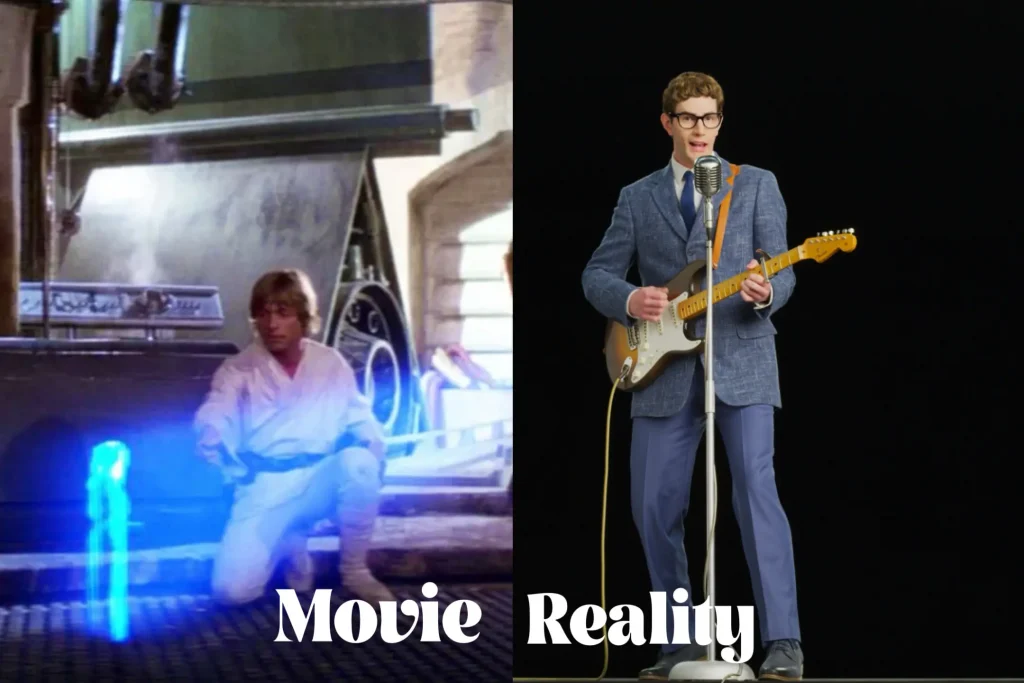
Movie: “Star Wars: A New Hope” (1977)
Drawing inspiration from “Star Wars,” 3D holograms play a key role, notably seen when Princess Leia sends a distress message through R2-D2 to Obi-Wan Kenobi.
Today, researchers strive to materialise 3D holograms, which finds diverse applications, including resurrecting icons like Buddy Holly and Roy Orbison for live concerts in 2019, accompanied by live musicians.
6. Drones
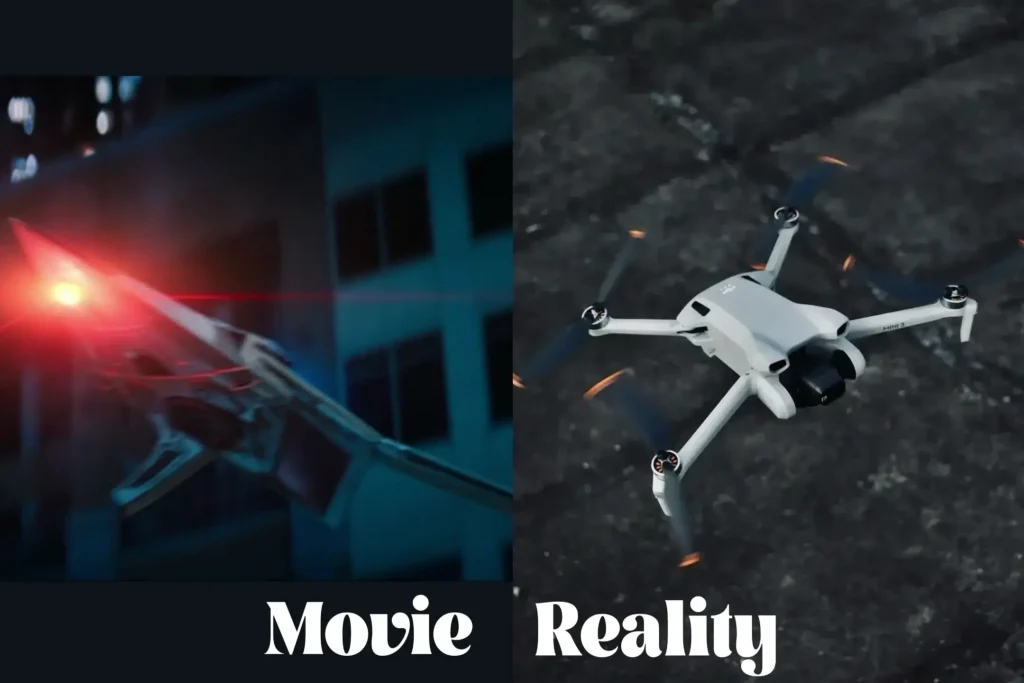
Movie: “Captain America: The Winter Soldier” (2014)
Drones are featured as part of S.H.I.E.L.D. ‘s arsenal in this Marvel Cinematic Universe installment. They are deployed for surveillance and combat operations.
Although it’s Initially for military use, commercial and recreational applications soared after Amazon’s 2013 drone delivery concept. Drones now aid in photography, emergency response, and even agricultural pollination, echoing sci-fi predictions.
7. Gesture control
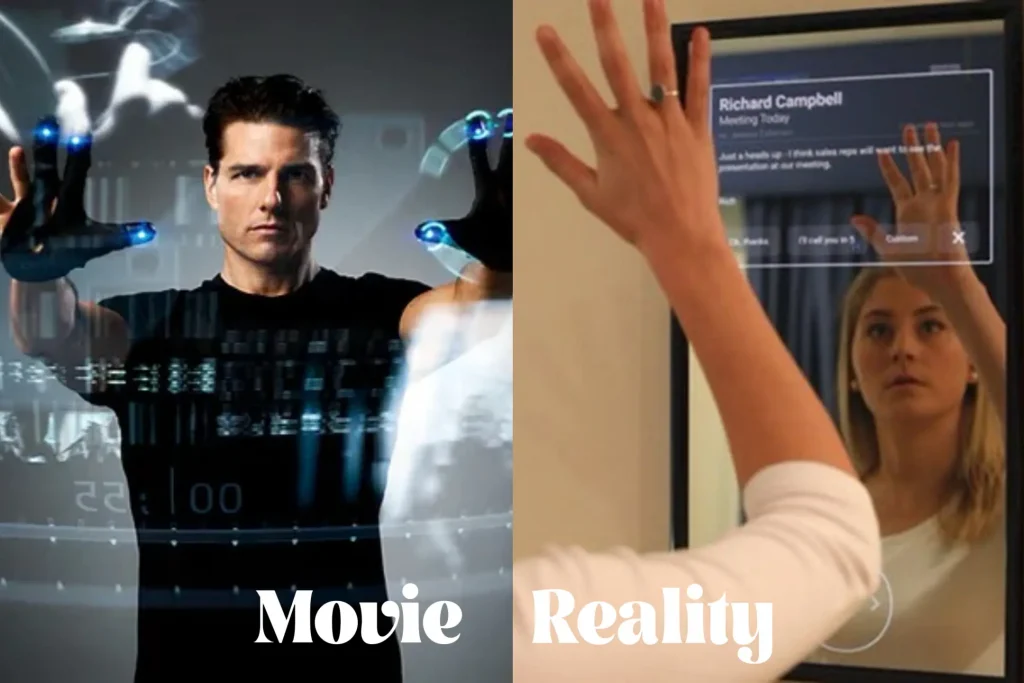
Movie: “Minority Report” (2002)
In “Minority Report,” gesture control technology enables intuitive and precise interaction with digital content in a three-dimensional space. Characters manipulate holographic projections with hand gestures, mimicking real-world object manipulation.
Today, gesture control technology is no longer a new concept, but a thriving reality in a variety of fields. From the automotive industry, where drivers can adjust settings without taking their eyes off the road, to the smart home, where a simple wave of the hand can dim the lights or change the thermostat.
8. Smartwatches

Movie: “Dick Tracy” (1990)
In the movie “Dick Tracy,” smartwatches are prominently featured as futuristic communication devices, allows for two-way communication, video calls, and other functionalities, resembling modern-day smartwatches.
Beyond communication, they offer health tracking, notifications, and a plethora of other functionalities, seamlessly integrated into our daily lives.
9. Universal translators

Movie: “Star Trek” (1966)
In “Star Trek,” universal translators are advanced devices used for seamless communication between species, often integrated into handheld communicators or ship computers.
Translators nowadays can instantly and accurately translate languages from all over the world. These tools promote global connectivity and cultural exchange, fostering understanding and collaboration in an increasingly interconnected world.
10. Solar power
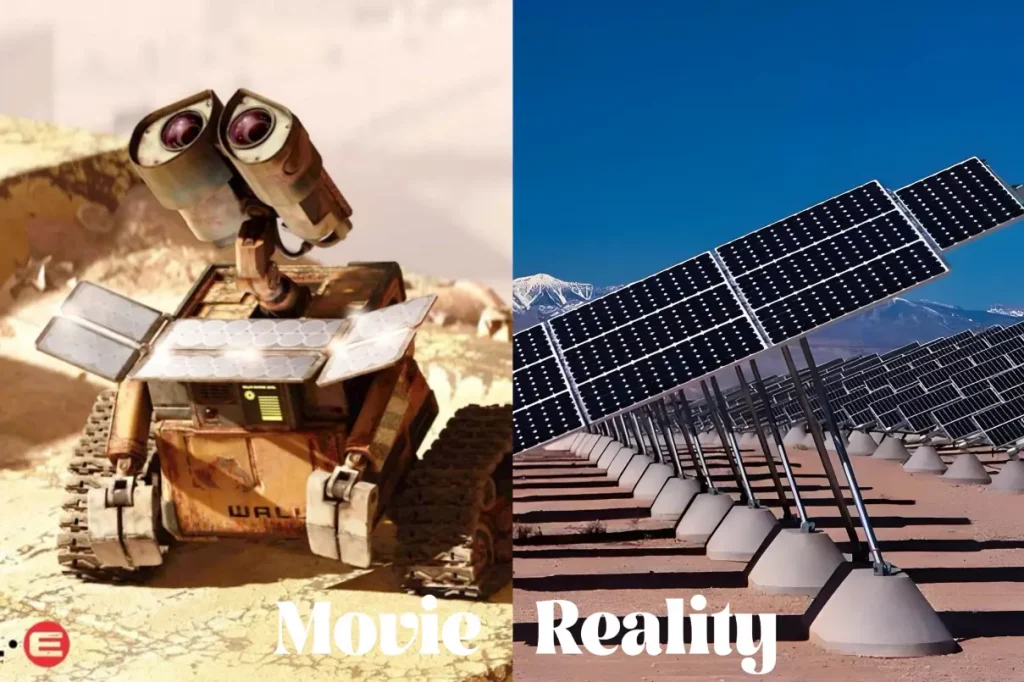
Movie: “Wall-E” (2008)
In the movie, the main character Wall-E relies on solar power for energy, as he recharges his batteries using solar panels mounted on his body.
And now in the real-life, offering renewable and sustainable energy solutions, solar power plays a crucial role in combating climate change and reducing dependence on fossil fuels.
11. Cryogenic preservation
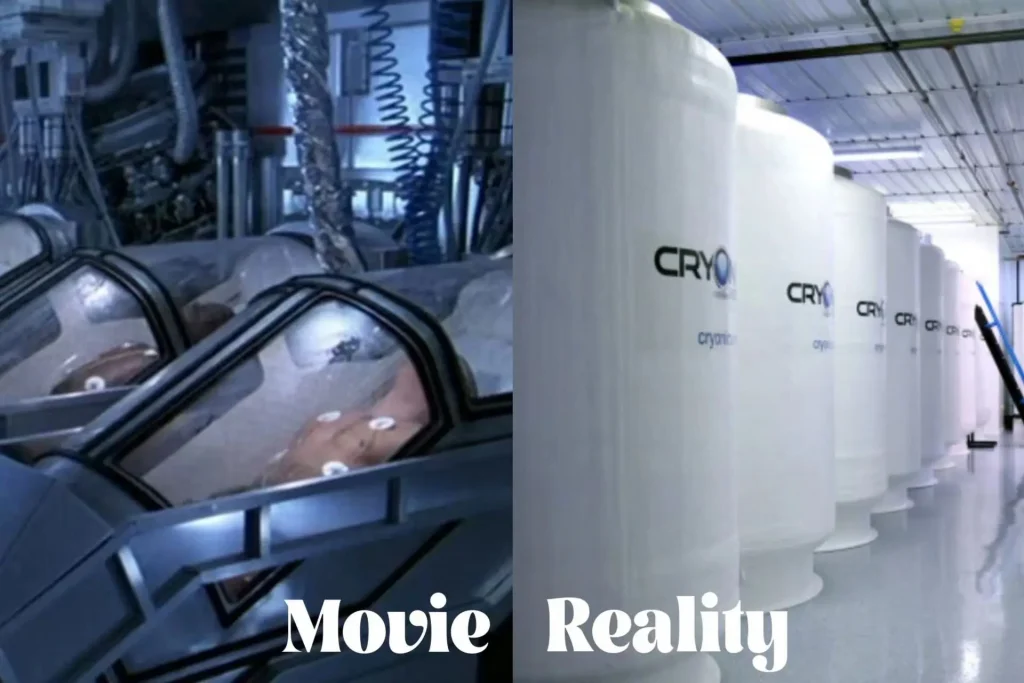
Movie: “Alien” (1979)
In “Alien,” cryogenic preservation is used for long-distance space travel. Crew members are placed in pods, slowing their metabolism to preserve their bodies during the journey.
Companies like Alcor Life Extension Foundation, Tomorrow Biostasis, Cryonics Institute are researching Cryogenic preservation. They explores techniques for preserving biological tissues at ultra-low temperatures, holding promise for future medical interventions and organ transplantation.
12. Video calls
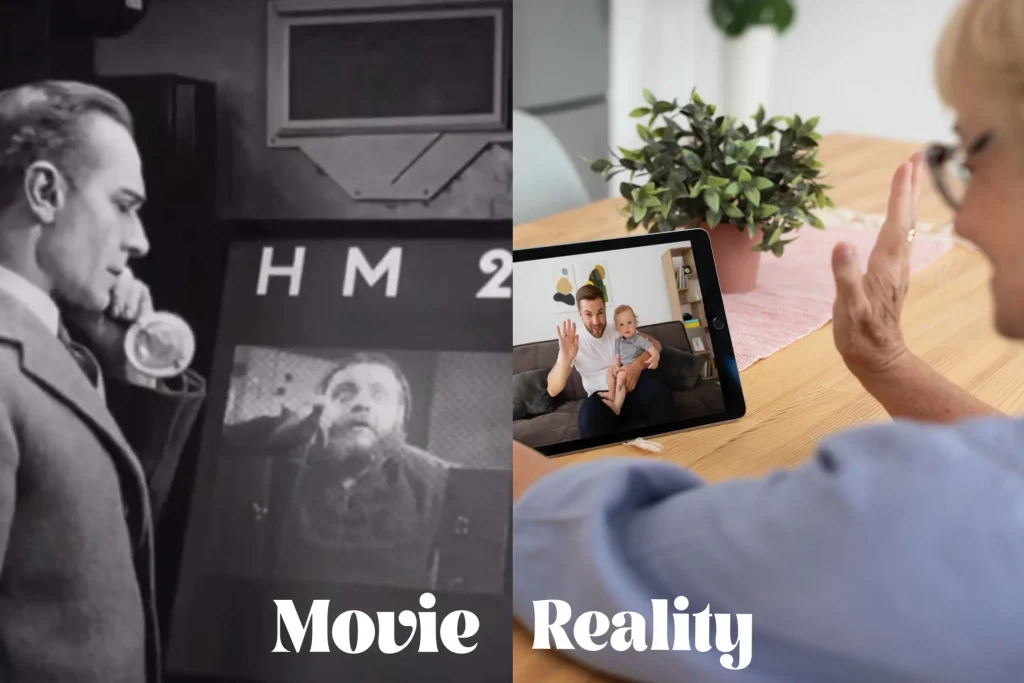
Movie: “Metropolis” (1927)
The concept of seeing the person you’re conversing with on a phone screen was once confined to the realm of science fiction, depicted in works like Hugo Gernsback’s novel “Ralph 124C 41+: A Romance of the Year 2660” and films such as “Metropolis.”
In the film, Fritz Lang is standing in a tower and is using a video call. Although the video call shown to us in the film was bulky and hung on the wall, video call technology is now available everywhere.
Now, facilitated platforms like Zoom, Facetime, and WeChat, have become ubiquitous. With individuals globally spending 340 million minutes daily on WhatsApp alone, it’s remarkable to reflect on how recently this technology was considered futuristic.
13. Facial recognition technology
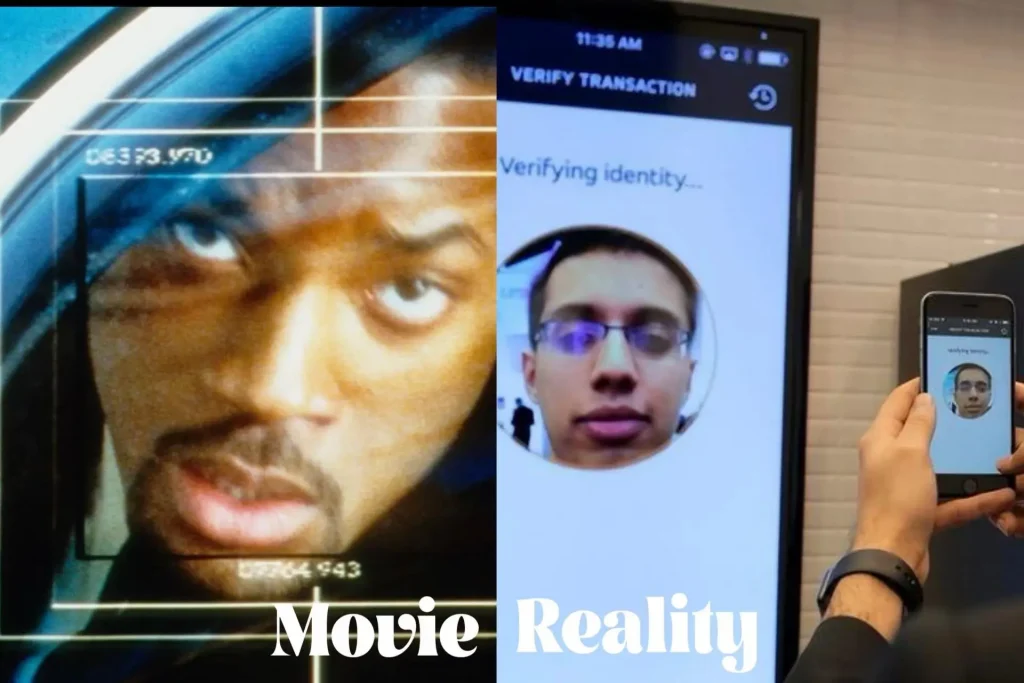
Movie: “Enemy of the State” (1998)
In the movie, the government uses facial recognition to track the protagonist’s movements as he becomes entangled in a conspiracy.
Initially introduced for security purposes, it’s now a ubiquitous feature in personal devices like smartphones and tablets. Its applications range from unlocking devices to enhancing photo organization.
14. Laser weapons
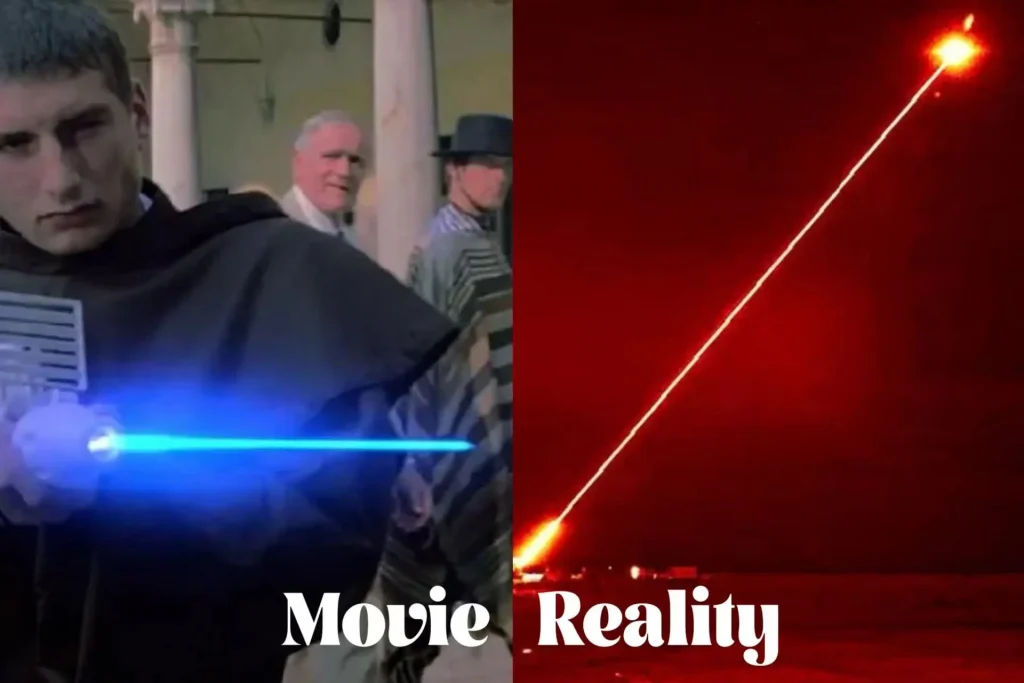
Movie: “Moonraker” (1979)
In the 1979 James Bond film “Moonraker,” the laser weapon is a notable piece of futuristic technology used in various scenes. These laser guns are depicted as handheld devices capable of emitting powerful laser beams that can destroy targets with high precision.
Laser weapons are no longer confined to science fiction. They’re actively being developed for military and security purposes, promising precision targeting and potentially reduced collateral damage.
Now, France, Germany, the UK, Russia and many other countries are developing their Laser weapons.
15. Smart armor
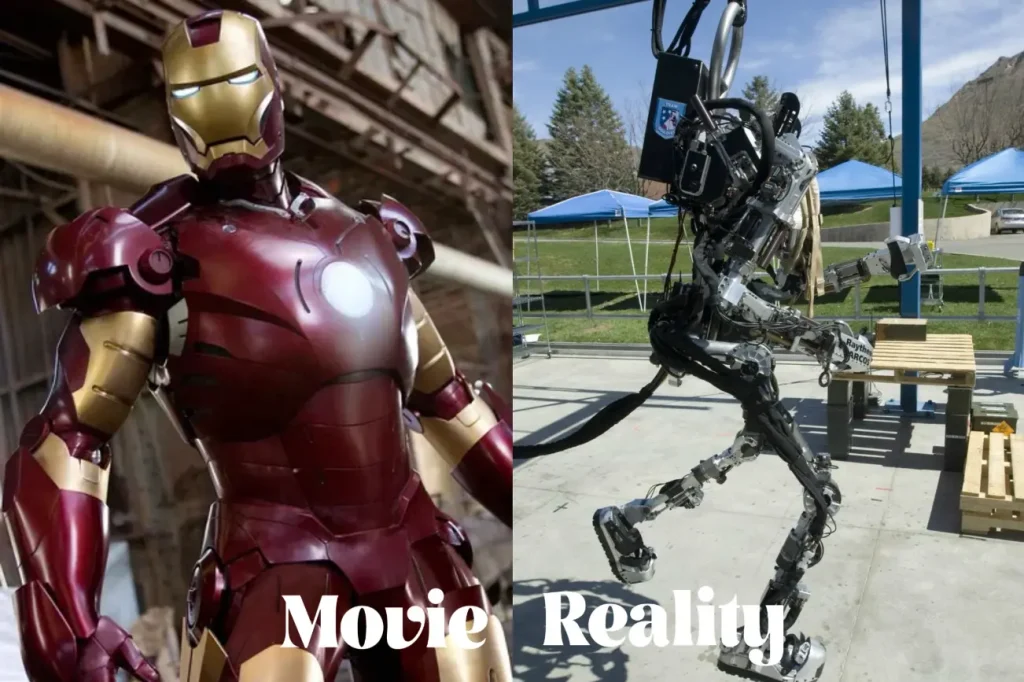
Movie: “Iron Man” (2008)
In the “Iron Man” movie franchise, smart armor refers to the highly advanced suit worn by the protagonist, Tony Stark. This suit is equipped with cutting-edge technology that enhances Tony’s strength, agility, and protection, while also providing him with an array of advanced features and capabilities.
While not as advanced as the Iron Man suit, modern exoskeletons assist in medical rehabilitation and industrial work by enhancing strength and endurance.
The TALOS combat suit has seen significant development in recent years. It monitors soldiers’ health, includes advanced communication devices, and may integrate hydraulic armor to boost strength, providing superior protection and enhanced explosive power, resembling “Iron Man” capabilities.
16. AI girlfriends

Movie: “Her” (2013)
In the film, the protagonist Theodore Twombly, develops a romantic relationship with an artificial intelligence (AI) operating system named Samantha, and now AI girlfriends has become an option for many office workers in 2024.
AI girlfriend chatbots have surged in popularity, offering companionship to lonely men who are turning away from traditional dating apps in favour of these virtual relationships. Singapore emerged as the country most interested in AI girlfriends, with 31 searches per 100,000 people per month.
17. Digital billboards
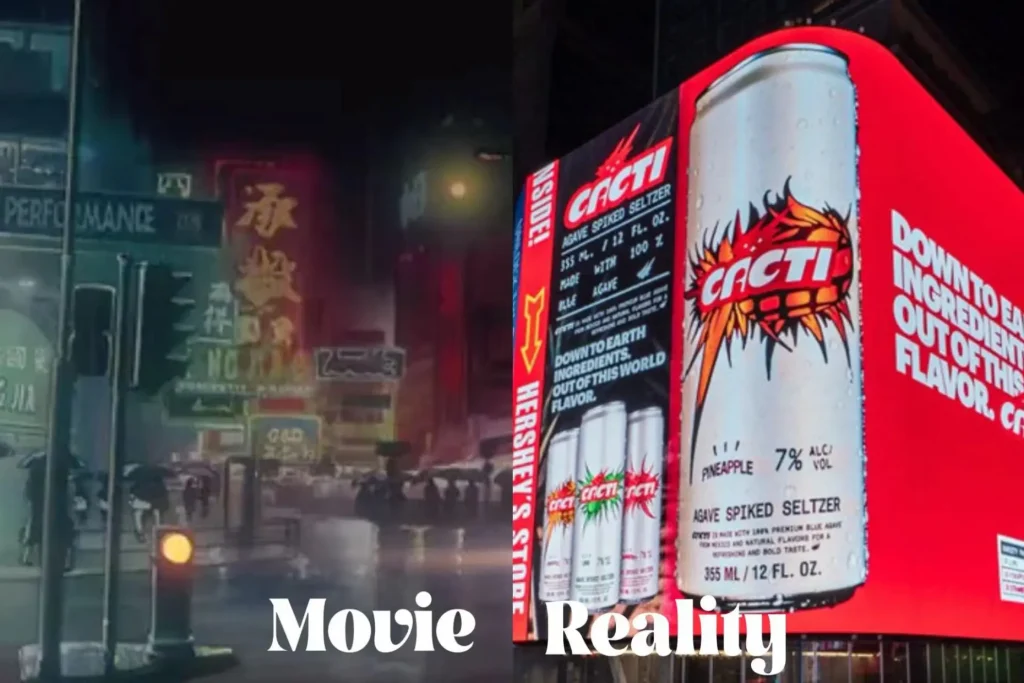
Movie: “Ghost in the Shell” (1995)
In “Ghost in the Shell,” digital billboards dominate the cyberpunk cityscape, showcasing advertisements, news updates, and propaganda, enhancing the film’s futuristic atmosphere.
Digital billboards are now in every aspect of life, and you can even personalise the content you want.
18. Virtual reality
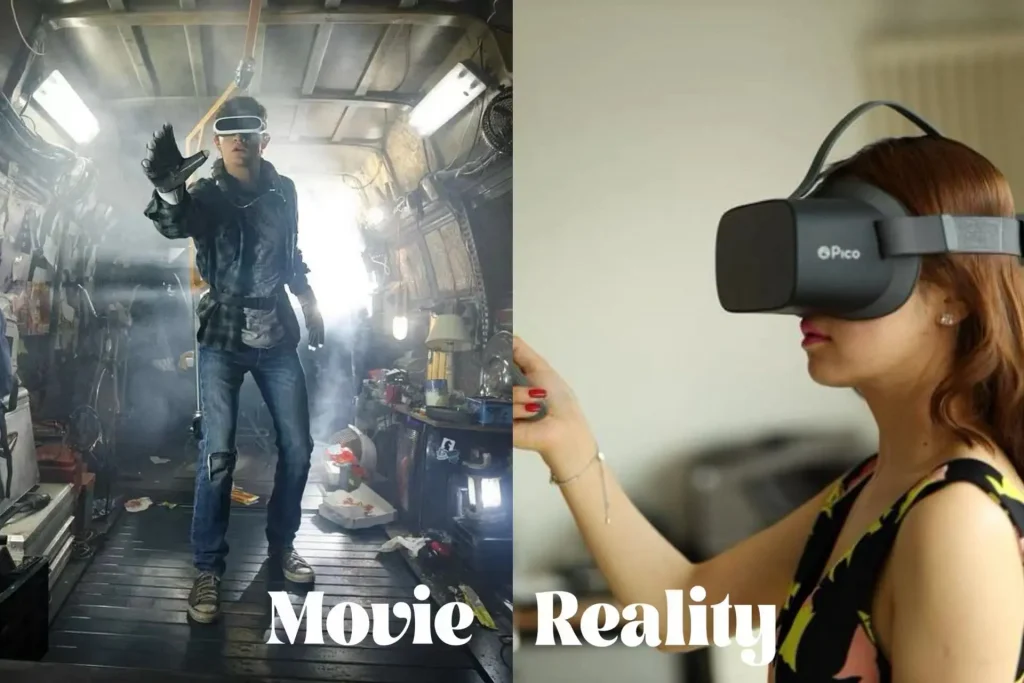
Movie: “Ready Player One” (2018)
The story is set in an anti-utopian future virtual universe called the OASIS. The VR technology depicted in “Ready Player One” is highly immersive, with users wearing haptic suits and visors that provide sensory feedback, allowing them to feel, see, hear, and interact with the virtual environment as if it were real.
Today, virtual reality (VR) technology is used for gaming, training, therapy, and virtual tourism.
19. Smart glasses
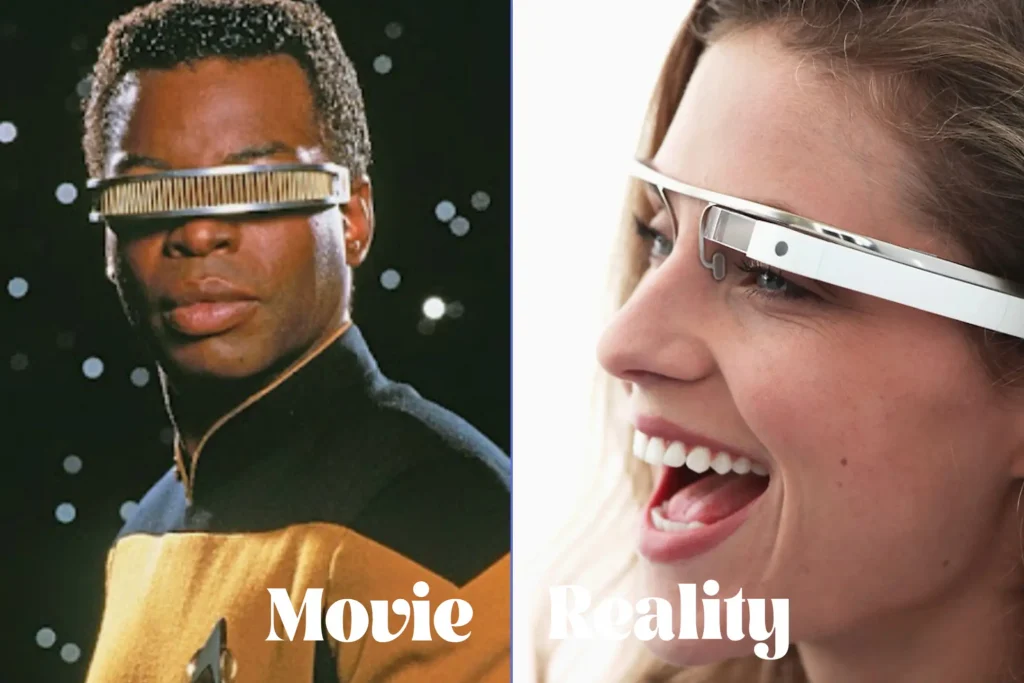
Movie: “Star Trek: The Next Generation” (1987)
In “Star Trek: The Next Generation,” smart glasses are featured in the form of VISORs (Visual Instrument and Sensory Organ Replacement),the VISORs allow Geordi to “see” beyond the normal human range of vision, providing him with valuable insights during missions aboard the USS Enterprise.
Now, Google, Meta and Nvidia have all come out with smart glasses similar to those in the film.
20. Biometric security
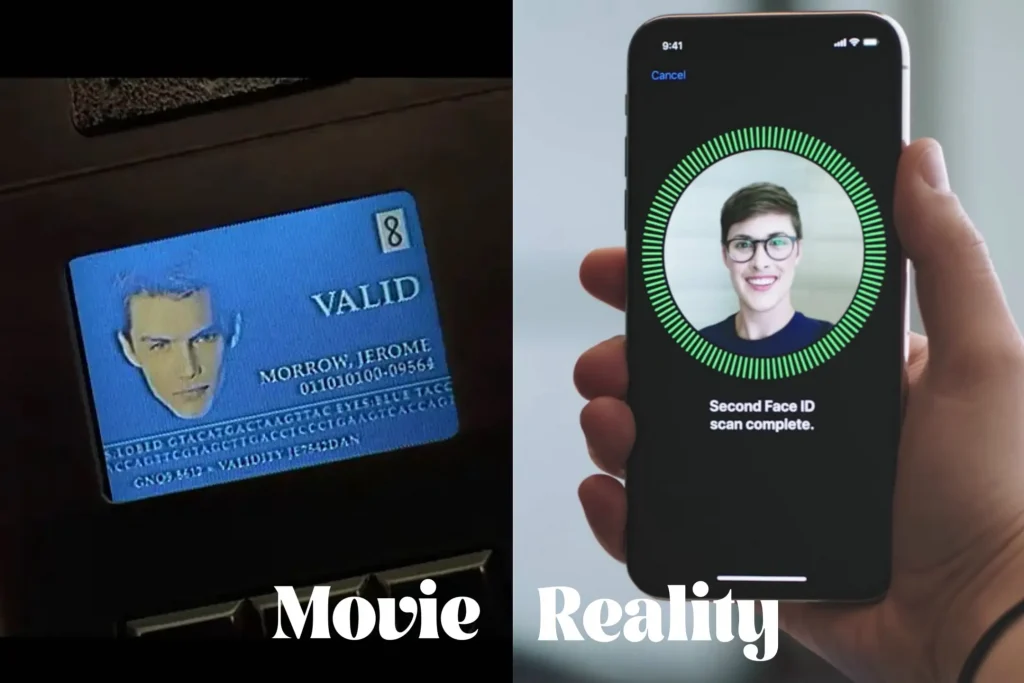
Movie: “Gattaca” (1997)
One of the main biometric security features in “Gattaca” is the use of genetic testing and analysis to determine an individual’s genetic profile. This genetic profile is then used to identify individuals and grant access to various facilities and opportunities.
For example, characters in the film must undergo genetic testing to access certain jobs, facilities, and services.
Real-world biometric authentication systems, such as fingerprint and facial recognition, draw inspiration from this concept.
21. Personalised advertising
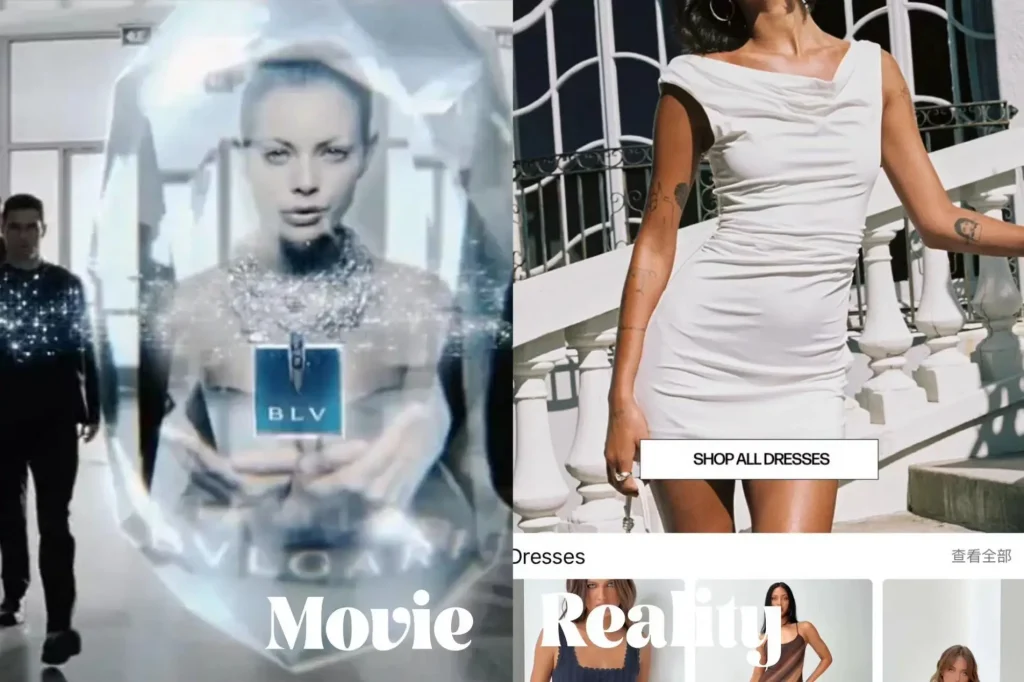
Movie: “Minority Report” (2002)
“Minority Report” depicts a future where advertising is personalised and targeted based on individuals’ data and preferences. These advertisements are displayed on digital screens that use retinal scanning technology to identify individuals and deliver targeted content in real-time.
While not as invasive as depicted in the movie, online advertising algorithms use similar principles to target consumers with relevant ads.
22. Jetpacks
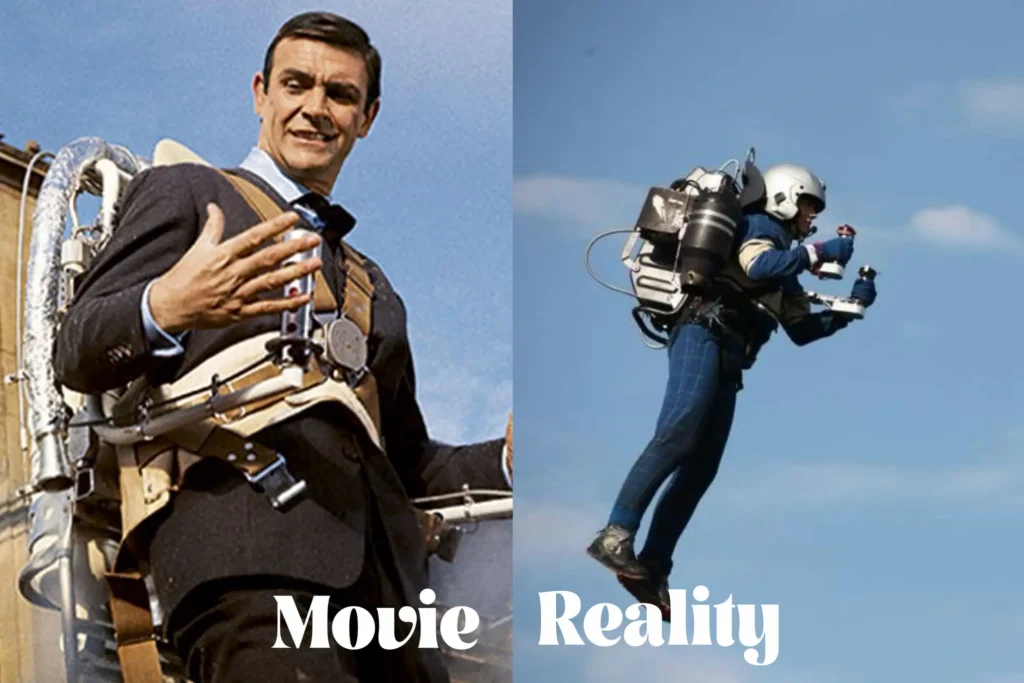
Movie: “Thunderball” (1965)
The jetpack appears in the pre-title sequence. After eliminating a SPECTRE agent, Bond swiftly escapes from the chateau using a Bell Rocket Belt, a real jetpack developed in the early 1960s by Bell Aerosystems.
While not yet practical for everyday use, jetpacks have potential applications in emergency response and specialised operations.
23. Nanotechnology
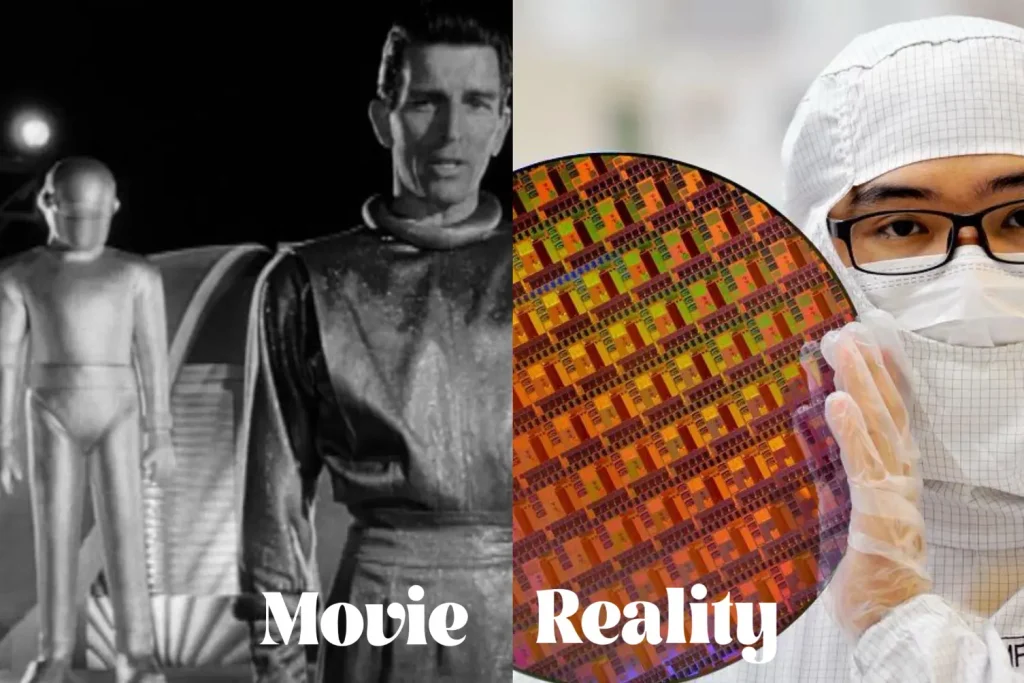
Movie: “The Day the Earth Stood Still” (1951)
“The Day the Earth Stood Still” portrays microscopic nanobots capable of self-replication and transforming matter. In the film, the nanobots are shown consuming and disintegrating objects, vehicles, and infrastructure, demonstrating their destructive power.
While not as advanced as depicted, real-world nanotechnology has applications in medicine, electronics, and materials science.
24. Artificial intelligence

Movie: “Blade Runner” (1982)
In the movie, replicants are advanced bio-engineered beings created by the Tyrell Corporation, designed to be virtually indistinguishable from humans but with superior physical abilities and limited lifespans.
AI has practical applications, such as aiding astronomers in discovering exoplanets. By analyzing vast datasets from missions like NASA’s Kepler and TESS, AI can efficiently detect the characteristic signals of these distant planets.
25. Wireless earphones
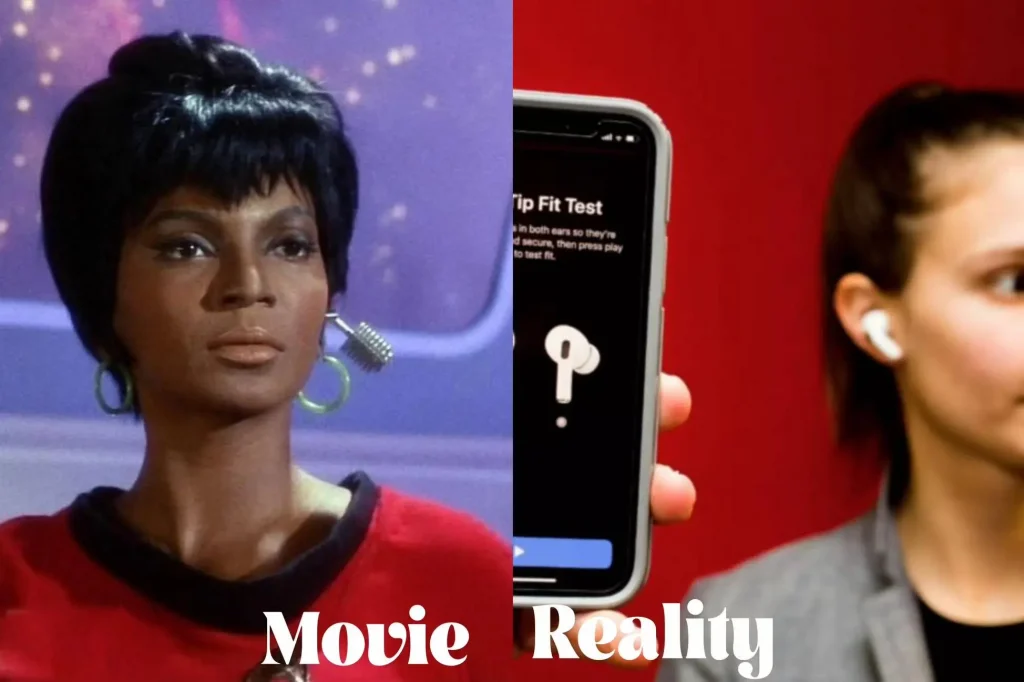
Movie: “Star Trek IV: The Voyage Home” (1986)
In the movie, characters use small, discreet earpieces to communicate wirelessly. The wireless earphones are used by the characters to communicate with each other without drawing attention. They are small, discreet, and allow for private conversation in public settings.
This was the precursor to the current Bluetooth headset. Bluetooth headsets are now full of our daily lives and widely used.
26. Robot pets
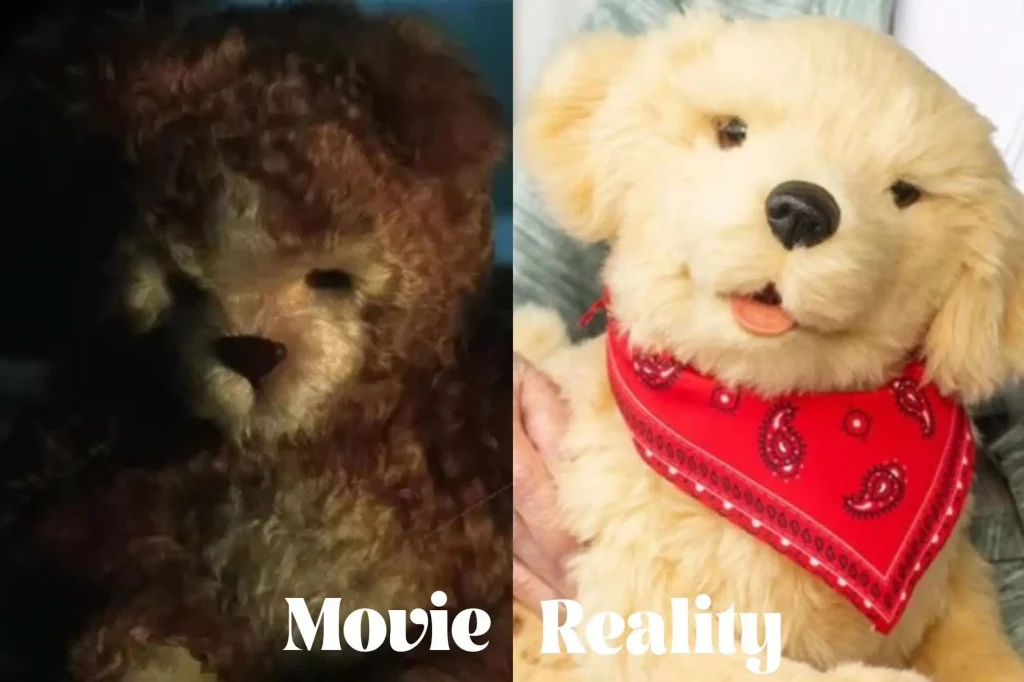
Movie: “A.I. Artificial Intelligence” (2001)
Teddy is equipped with artificial intelligence and advanced sensory capabilities, allowing him to interact with David and provide emotional support throughout their journey.
Though not labeled as “robot pets,” Teddy and similar companions in “A.I.” serve akin to traditional pets, providing companionship and comfort to their human owners.
While not as advanced as David’s robotic teddy bear in “A.I. Artificial Intelligence,” robotic companions for therapy and companionship are already in use. These robots offer emotional support and companionship, particularly for the elderly and those with special needs.
Also read: AI: The opportunities and the threats
Also read: AI lies: Should we worry about deceptive AI models?
Pop quiz
Which of the following technologies is not yet a reality?
A. AI girlfriends
B. 3D printing
C. Laser weapons
D. Flying cars
The correct answer is at the bottom of the article.
Items coming soon in real-life
Here are 7 rapidly evolving technologies that could become a reality in the next 30 years.
While many things in sci-fi films are becoming a reality in real life, more new technologies are coming for real as the human brain’s endless imagination and society continue to move forward.
1. Space tourism
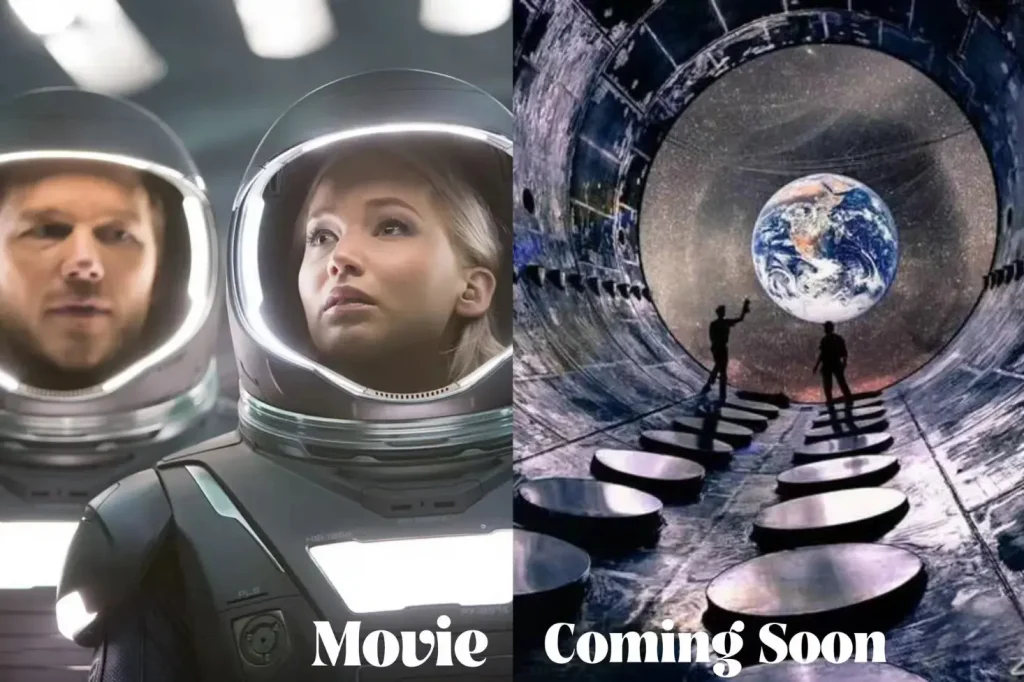
Movie: “Passengers” (2016)
Space travel in “Passengers” is depicted as a luxurious and advanced endeavor, with the Avalon featuring amenities such as entertainment venues, restaurants, and recreational areas to ensure a comfortable journey for its passengers.
While not routine, recent developments in reusable rocket technology and private spaceflight initiatives are paving the way for space tourism, offering civilians the opportunity to experience space firsthand.
2. Self-driving cars
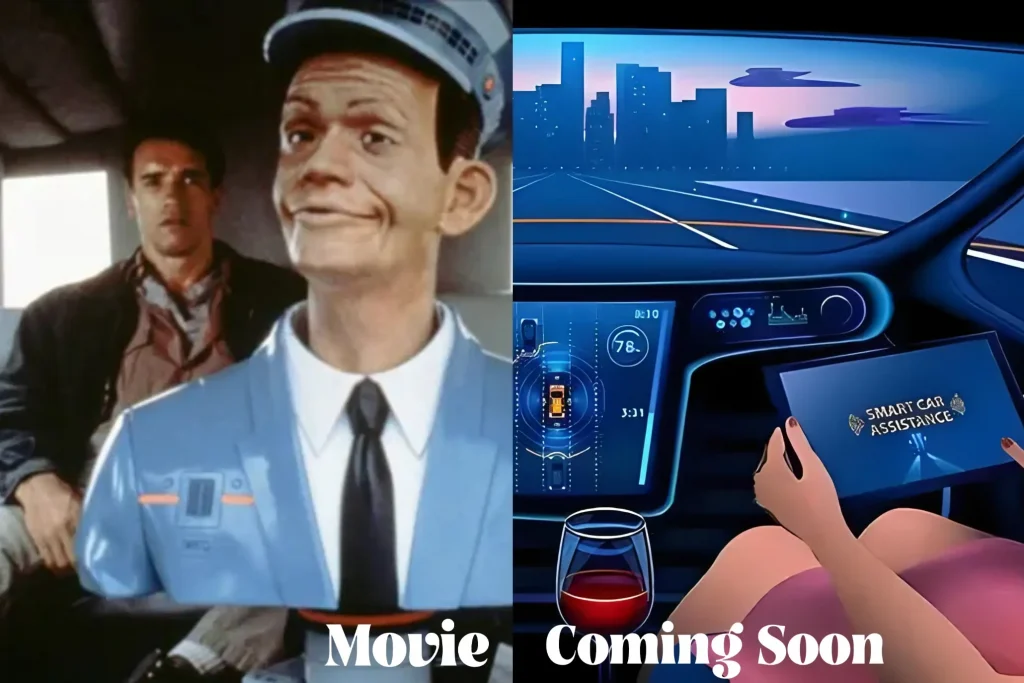
Movie: “Total Recall” (1990)
In “Total Recall,” self-driving cars elegantly maneuver through the bustling cityscape, effortlessly weaving through crowded streets without the need for human drivers. Equipped with cutting-edge navigation and collision avoidance systems, these vehicles embody the pinnacle of autonomous transportation technology depicted in the film’s futuristic world.
Tesla, Waymo, and Uber spearhead the drive towards a future of autonomous vehicles, fueled by AI and sensors. Although fully autonomous cars are still in testing, substantial progress has been achieved, paving the way for their safe and practical integration into transportation systems.
3. Bionic limbs
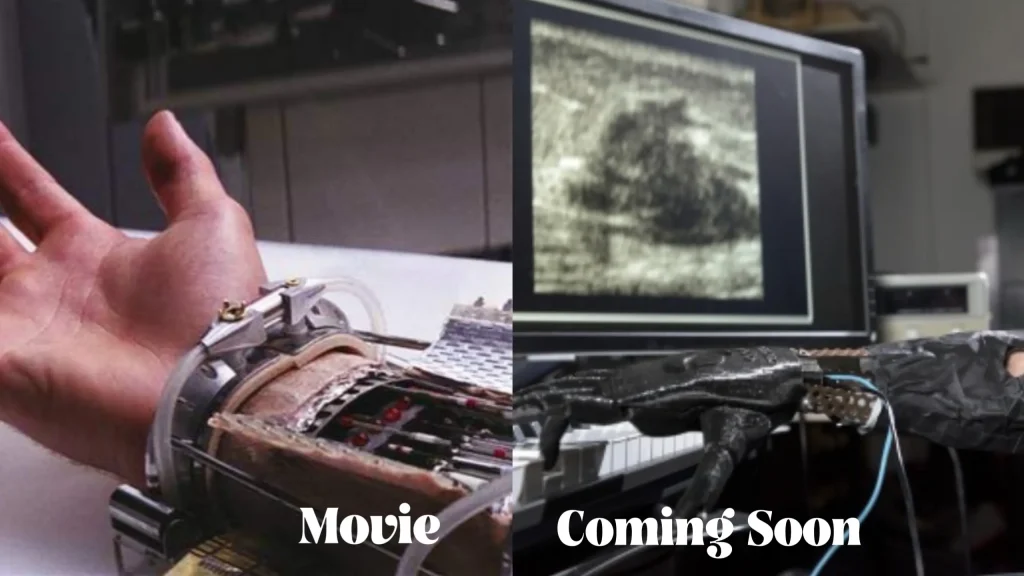
Movie: “Star Wars: Episode V — The Empire Strikes Back” (1980)
Luke Skywalker loses his right hand during a lightsaber duel with Darth Vader. He is fitted with a bionic replacement hand.
These bionic limbs are advanced prosthetics that provide enhanced strength, dexterity, and functionality. They are seamlessly integrated into the characters’ bodies and are capable of performing tasks that surpass the capabilities of natural limbs.
Researchers from the Georgia Institute of Technology in Atlanta, Georgia, have been developing a way for amputees to control each of their prosthetic fingers using an ultrasonic sensor.
4. Flying cars
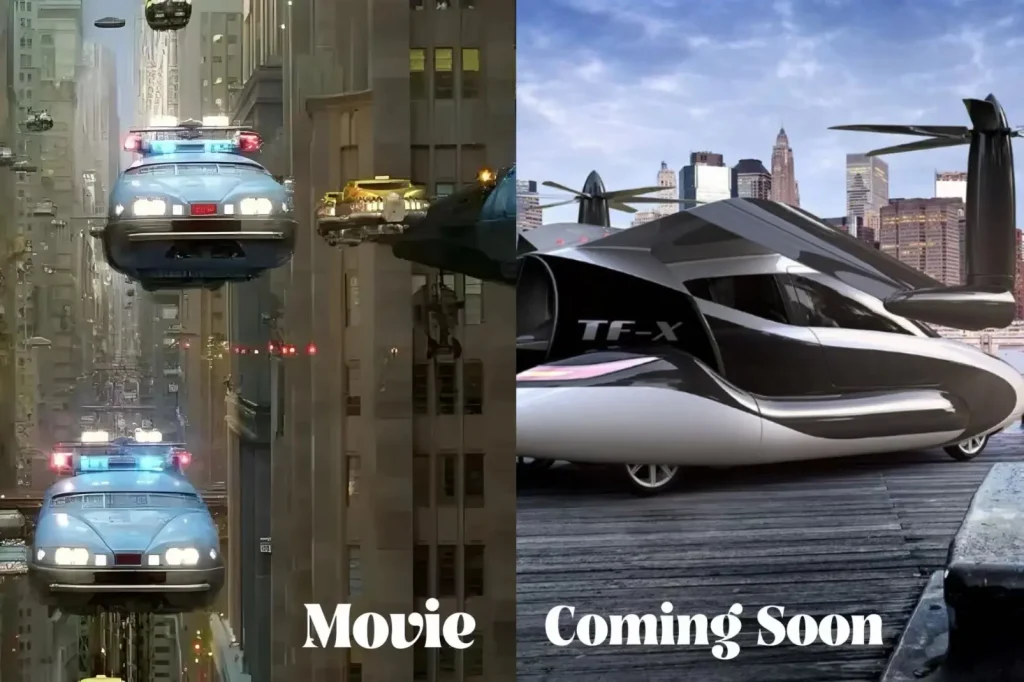
Movie: “The Fifth Element” (1997)
In Luc Besson’s visually stunning film, flying cars are a ubiquitous mode of transportation in the bustling futuristic metropolis. These sleek vehicles zip through the sky with agility, contributing to the film’s vibrant and kinetic atmosphere.
Real-world prototypes are being developed by companies like Terrafugia and PAL-V, aiming to revolutionise urban transportation despite regulatory and infrastructure challenges.
5. Hoverboard
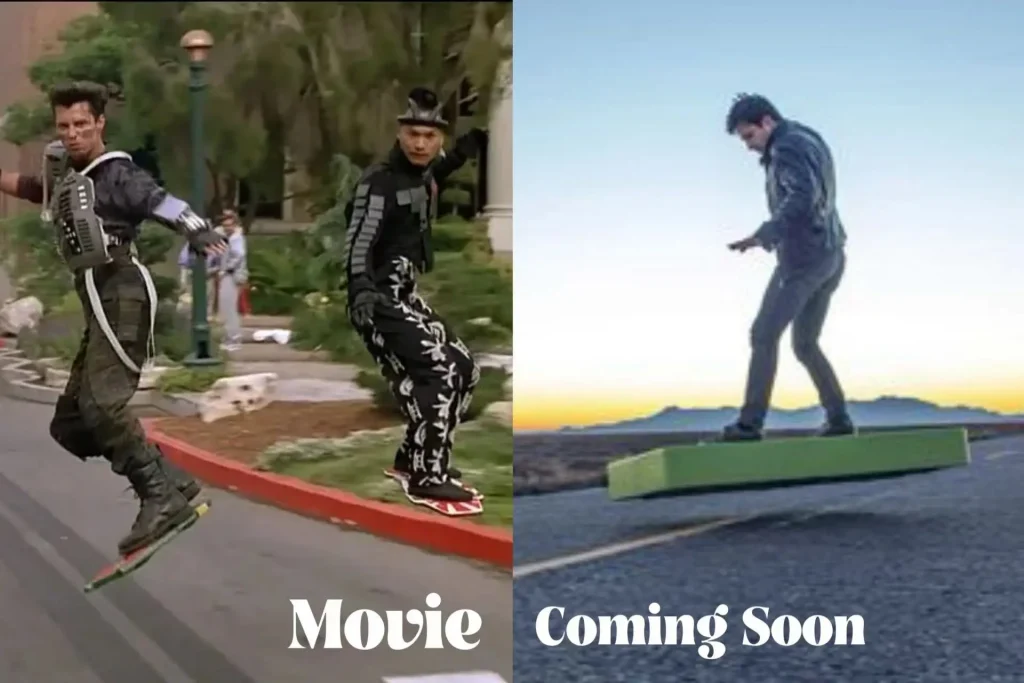
Movie: Back to the Future Part II (1989)
In “Back to the Future Part II,” hoverboards are depicted as futuristic skateboards that float above the ground, allowing riders to glide effortlessly through the air.
The hoverboards are depicted as sleek, aerodynamic devices that resemble traditional skateboards but lack wheels, instead relying on magnetic levitation or anti-gravity technology to float above the ground.
The iconic scene where Marty McFly uses a hoverboard to escape his pursuers inspired generations of inventors and engineers to turn this science fiction concept into a reality. While not yet practical for everyday use, these innovations demonstrate the potential for future advancements.
6. Brain-Computer Interfaces
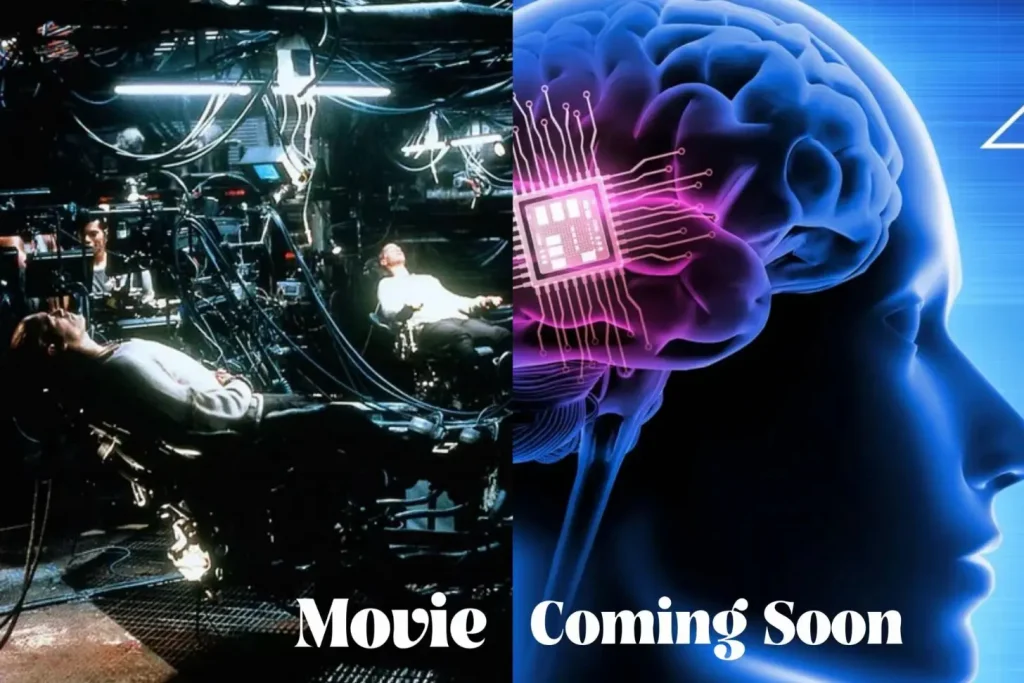
Movie: “The Matrix” (1999)
In “The Matrix,” humans are connected to a virtual reality world through brain-computer interfaces, allowing them to perceive and interact with the simulated environment.
Now, Neuralink, an American neurotechnology company are trying to develop brain-computer interface (BCI) technology to enable direct communication between the human brain and computers.
7. Invisibility cloak
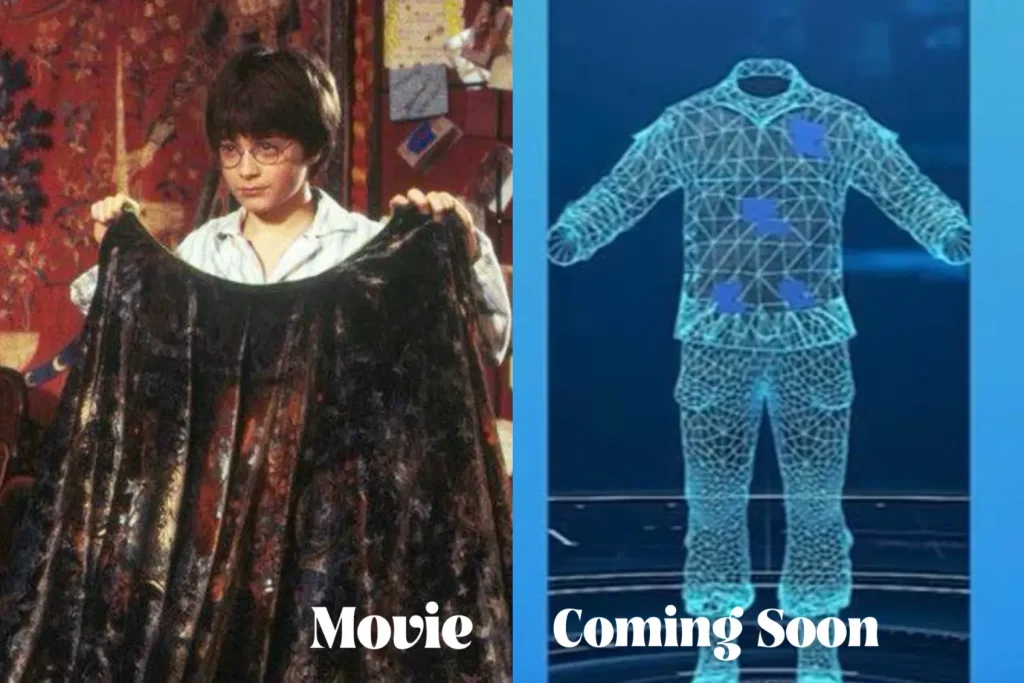
Movie: “Harry Potter and the Philosopher’s Stone” (2001)
The invisibility cloak is depicted as a silvery, semi-transparent fabric that drapes over the wearer and conceals them from view. While under the cloak, the wearer is hidden from sight but can still hear and interact with their surroundings.
While not yet practical for large-scale applications, progress has been made in creating cloaking devices for military and scientific purposes.
From holographic displays to self-driving cars, from voice-activated assistants to augmented reality glasses, from artificial intelligence to laser weapons, the technologies once confined to the realms of imagination are now on the verge of transforming our world in ways we’ve only begun to imagine.
The correct answer is D, flying cars technology is still under development right now.
